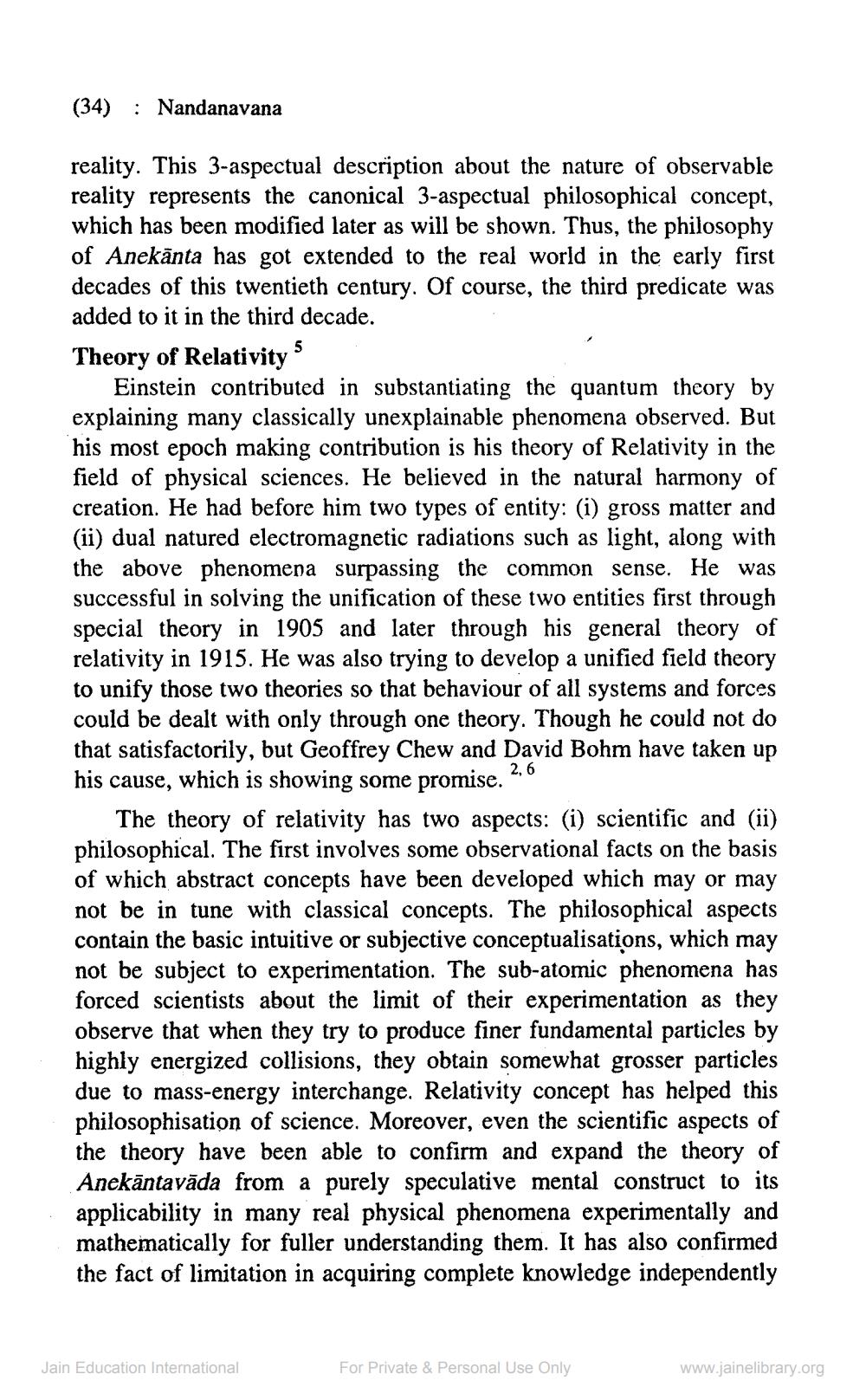________________
(34) : Nandanavana
reality. This 3-aspectual description about the nature of observable reality represents the canonical 3-aspectual philosophical concept, which has been modified later as will be shown. Thus, the philosophy of Anekānta has got extended to the real world in the early first decades of this twentieth century. Of course, the third predicate was added to it in the third decade. Theory of Relativity 5
Einstein contributed in substantiating the quantum theory by explaining many classically unexplainable phenomena observed. But his most epoch making contribution is his theory of Relativity in the field of physical sciences. He believed in the natural harmony of creation. He had before him two types of entity: (i) gross matter and (ii) dual natured electromagnetic radiations such as light, along with the above phenomena surpassing the common sense. He was successful in solving the unification of these two entities first through special theory in 1905 and later through his general theory of relativity in 1915. He was also trying to develop a unified field theory to unify those two theories so that behaviour of all systems and forces could be dealt with only through one theory. Though he could not do that satisfactorily, but Geoffrey Chew and David Bohm have taken up his cause, which is showing some promise. "
The theory of relativity has two aspects: (i) scientific and (ii) philosophical. The first involves some observational facts on the basis of which abstract concepts have been developed which may or may not be in tune with classical concepts. The philosophical aspects contain the basic intuitive or subjective conceptualisations, which may not be subject to experimentation. The sub-atomic phenomena has forced scientists about the limit of their experimentation as they observe that when they try to produce finer fundamental particles by highly energized collisions, they obtain somewhat grosser particles due to mass-energy interchange. Relativity concept has helped this philosophisation of science. Moreover, even the scientific aspects of the theory have been able to confirm and expand the theory of Anekāntavāda from a purely speculative mental construct to its applicability in many real physical phenomena experimentally and mathematically for fuller understanding them. It has also confirmed the fact of limitation in acquiring complete knowledge independently
Jain Education International
For Private & Personal Use Only
www.jainelibrary.org




